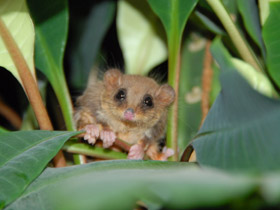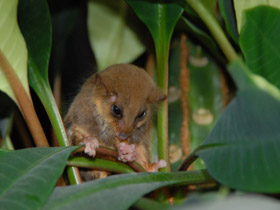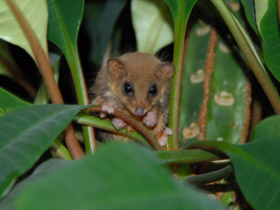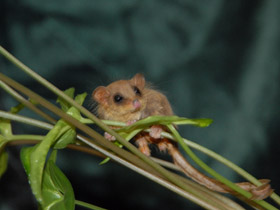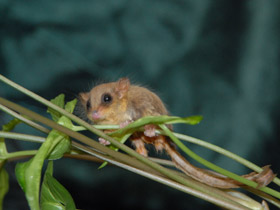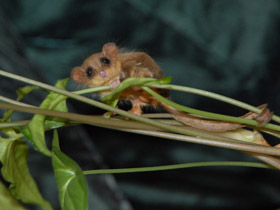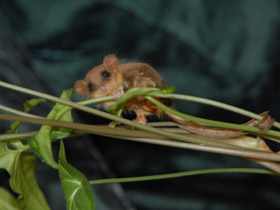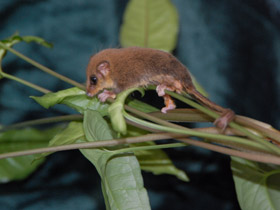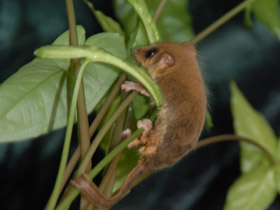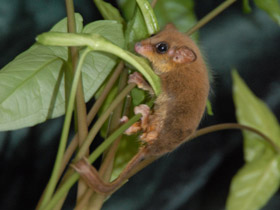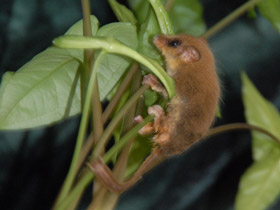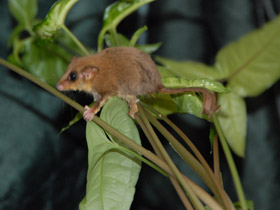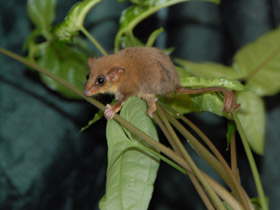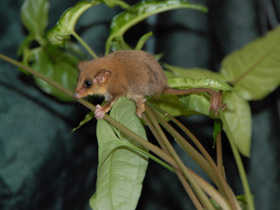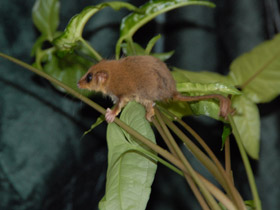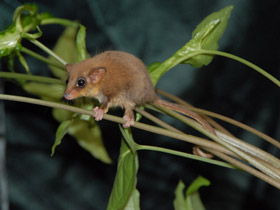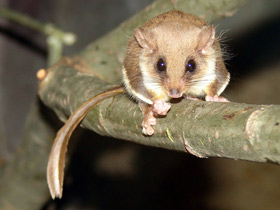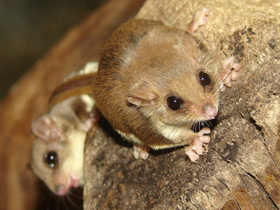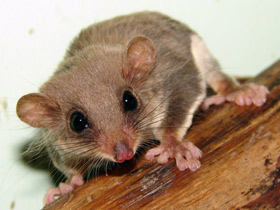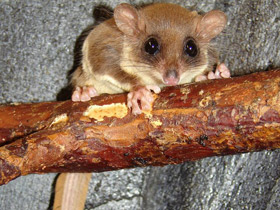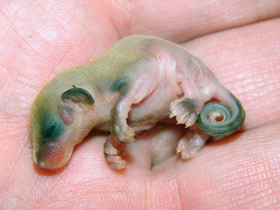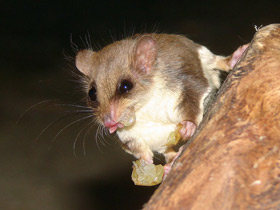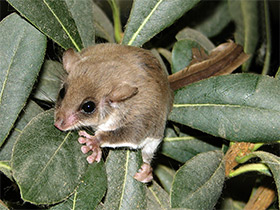The feathertail glider (Acrobates pygmaeus), pygmy gliding possum, pygmy glider, pygmy phalanger, flying phalanger and flying mouse, narrow-toed feathertail glider
The feathertail glider (Acrobates pygmaeus), also known as the pygmy gliding possum, pygmy glider, pygmy phalanger, flying phalanger and flying mouse, is a species of marsupial native to eastern Australia. It is the world's smallest gliding mammal and is named for its long feather-shaped tail.
A second species, the broad-toed feathertail glider (Acrobates (Dromicia) frontalis, De Vis 1887) is recognised by some authors based on unpublished genetic studies and cryptic morphological differences in toe and tail characteristics. With this recognition, it is suggested that Acrobates pygmaeus takes the common name narrow-toed feathertail glider.
Acrobates pygmaeus is a species of marsupial native to eastern Australia. It is the world's smallest gliding mammal and is named for its long, feathery tail.
Appearance and peculiarities
This tiny Acrobates pygmaeus, only 6-7 cm long and weighing 11-15 g, has long whiskers, huge eyes, skin flaps for gliding and a striking tail, unlike that of other gliding mammals. It is flattened and the stiff hairs are arranged to give it the appearance of a peculiar feather.
The English name Acrobates pygmaeus - feather tail glider - translates literally as "feather tail glider". During gliding, the tail is used as a rudder and brake, and while moving through the trees Acrobates pygmaeus uses it to cling to branches; the animal is also able to twist its tail into a kind of tube and use it to carry leaves to build a nest. Acrobates pygmaeus spends most of its life in the tree canopy, skilfully scurrying over the thinnest twigs, and its gliding flight allows it to easily overcome a distance of up to 20 m between neighbouring trees. This cricket has special heart-shaped pads on the soles of its feet, which give it such a firm grip on the surface that it can even run on a vertical glass surface (as can often be seen in the Moscow Zoo).
Distribution, nutrition and lifestyle
Found in the forests of southeastern Australia, Acrobates pygmaeus feeds primarily on nectar or pollen from eucalyptus and other trees, but also eats fruit, seeds and various small animals. These agile bugs visit many flowers every night in search of nectar, transferring pollen from one plant to another and pollinating them.
Pygmaeus acrobats build a ball-shaped nest of leaves inside the hollow of a tree. Sometimes up to 16 animals can live in a nest, but usually no more than 3-5 animals. On cold days, these animals go into a torpor that can last from 1 to 5 days. During this time, their temperature is only a few degrees above room temperature. This short-lived "hibernation" helps Acrobates pygmaeus to save energy reserves and survive adverse conditions.
Reproduction
Female Acrobates pygmaeus give birth to 2-4 tiny young, weighing no more than 18 mg. Acrobates pygmaeus hatchlings spend about two months in the pouch. By this time they have reached a weight of 1.7 g and, although still blind and helpless, the pouch becomes too small for them. The pups then move to the nest and are periodically left there alone when the female leaves to forage for food. After another 40 days, they reach a weight of 8-8.5 g, stop feeding on their mother's milk and begin to live an independent life. Almost simultaneously, the female usually gives birth to her next litter. The point is that she mates on the day of the previous birth, but the development of the embryo stops after a few days. They only start to develop again when the pups from the previous litter have partially transitioned to adult feeding, and are born shortly after the older pups have finally left the pouch. This pattern, characteristic of many marsupials, ensures almost continuous reproduction of offspring.
In captivity
Taronga Zoo (Sydney, Australia) was the first zoo to breed feathertail gliders in captivity. The New Zoo in Poznań, Poland, was first European zoo to begin exhibiting feather-tail gliders in 1999 (their animals originated from Taronga Zoo stock). Some of the feathertail gliders born in Poznań have been sent to other European zoos, meaning that the entire European captive population is of Poznań descent.
In culture
A feathertail glider was featured on the reverse of the Australian 1-cent coin until 1991 when the 1-cent denomination was discontinued.

















